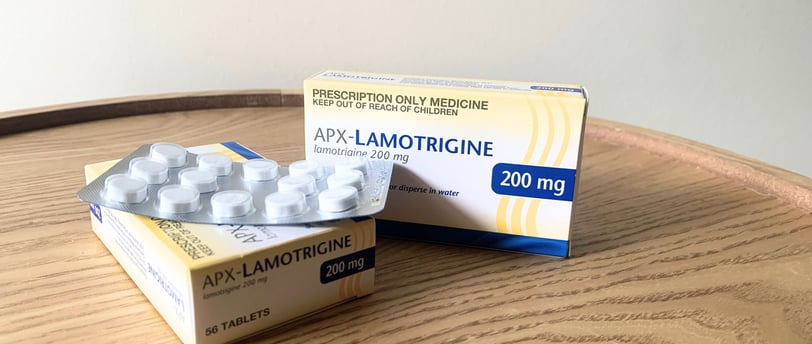How this website came about
Valproate is a drug I wasn't interested in, nor did I have any knowledge of its risks... until I started looking into the affordability of another drug: lamotrigine.
BIPOLAREPILEPSYPBSLAMOTRIGINE



The issues with valproate are typically only discussed and researched in the context of epilepsy. However, valproate is also prescribed as a core medicine (mood stabiliser) for treating bipolar disorder. It is one of only four such medicines for bipolar.
There are likely many more people with bipolar disorder taking valproate than those with epilepsy though the numbers for Australia are unconfirmed. This preliminary conclusion is based on the number of PBS prescriptions written by psychiatrists is more than double the number written each year by neurologists (TGA FOI 5351, Document 3, November 2024) and the population of people living with bipolar disorder is roughly three times the population living with epilepsy (bipolar disorder 1.8% of Australians QIMR Berghofer; epilepsy 0.6% of Australians AIHW).
Lamotrigine is another drug that is both an anticonvulsant for epilepsy and a mood stabiliser for bipolar disorder. However, while lamotrigine has been subsidised by the PBS for epilepsy since 1994, it remains excluded from the subsidy for bipolar disorder.
Despite its well-known name, the public generally knows very little about bipolar disorder. It is a very serious illness associated with a reduced life expectancy by more than a decade. The difference is largely attributable to physical causes that are either preventable or treatable. It is also known that 15-20% of people with bipolar disorder will end their own lives and the right medication can reduce that rate.
The three alternative mood stabilisers (maintenance treatments) for bipolar disorder are subsidised but also have various significant shortcomings. Such issues variously include, but are not limited to, considerable interactions many other medicines (including basic pain relief), toxicity, as well as elevated risks of long-term adverse outcomes for Indigenous Australians and anyone who has the physical ability to be pregnant.
Because this is a medicine clearly needed but unfortunately stuck in the system, I started a project with hope of finding a way for affordable access to lamotrigine to be improved.
When researching the issue, the considerable risks linked to valproate became apparent, as did the corresponding international reactions. Upon further investigation into valproate, I found there is a lack of easily accessible and high quality information for Australians. Where there is information, it is very challenging to locate.
I found the concerns surrounding valproate prescribing to be far too significant (as evidenced by international responses) to look away. My response is to start this website as a springboard to high-quality reliable resources for both consumers and prescribers that will improve awareness and knowledge, as well as prompt people to ask their own questions about valproate.
I hope you will find information on the site useful; keep checking in for more updates.
Send me an email if there is information you would like to see on the website or if you would like to contribute in any way either as a health professional or a consumer.
christine@valproate.info
Christine


